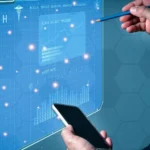Drone delivery, or drone logistics, is a cutting-edge technology that promises to revolutionize how goods are transported. Drones are unmanned aerial vehicles capable of autonomously carrying and delivering packages to various destinations.
Drone Delivery Facts
The important facts surrounding drone delivery are discussed below.
- Efficiency and Speed: Drone delivery offers the potential for swift and efficient transportation of goods. Drones can navigate through traffic-free airspace and reach their destinations faster than traditional ground-based methods.
- Last-Mile Delivery: Drones are particularly valuable for last-mile delivery, often the supply chain’s most time-consuming and costly part. They can access hard-to-reach or remote locations, reducing delivery times and costs.
- Reduced Carbon Footprint: Electric drones produce fewer emissions than traditional delivery vehicles, making them an environmentally friendly option. They can also contribute to reducing the carbon footprint of logistics operations.
- Emergency Response: Drones are used to deliver emergency medical supplies to remote areas or disaster-stricken regions where traditional transportation methods may be hindered.
- Innovation and Research: The development of drone technology has spurred innovation and investment in various sectors, including aerospace, software, and robotics.
Drone Delivery Views
Collaborative efforts in developing safety standards, regulatory frameworks, and responsible practices can help ensure that drone delivery becomes a safe, reliable, and socially acceptable mode of transportation soon.
- Safety Concerns: Critics are concerned about drones’ safety, particularly the risk of mid-air collisions, technical malfunctions, or drones falling from the sky and posing hazards to people and property.
- Regulatory Challenges: Drone delivery faces regulatory challenges as aviation authorities grapple with creating and enforcing rules that balance innovation with public safety and privacy.
- Privacy Issues: Using drones for delivery raises privacy concerns, as they can be equipped with cameras and sensors that may intrude on individuals’ private lives or collect data without consent.
- Job Displacement: There are concerns about the potential job displacement in the delivery and logistics sector as automation, including drone delivery, becomes more prevalent.
- Infrastructure and Technical Challenges: Establishing the necessary infrastructure for drones, including landing zones, charging stations, and traffic management systems, presents logistical and financial challenges.
Conclusion
Drone delivery holds significant promise regarding efficiency, speed, and environmental benefits. It has already demonstrated its value in specific use cases, such as medical supply deliveries and last-mile logistics. However, the technology faces various challenges, including safety, regulation, privacy, and infrastructure. Governments and industry stakeholders must harness the potential of drone delivery while addressing these challenges and for communities to work together. The evolution of this technology will continue to shape the future of logistics and transportation, offering both opportunities and challenges for society at large.










